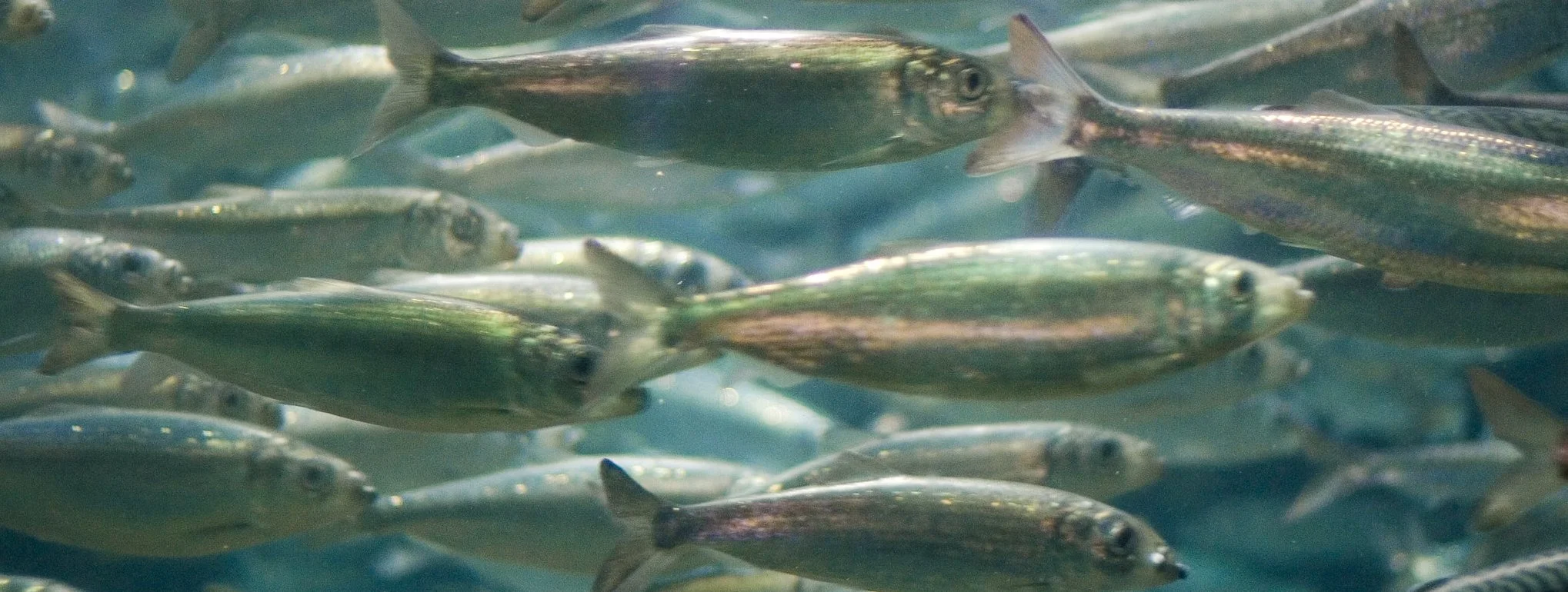By Bob Friel
Everybody loves the Salish Sea’s killer whales, playful porpoise, and puppy-like seals. Birders flock here to see such feathered favorites as rhinoceros auklets, tufted puffins, and marbled murrelets. And no fish anywhere is as exalted as our Chinook, the king salmon, appreciated as sport fish, table fare, and cultural icon.
But where’s the love for the sand lance? Who here is a herring hugger?
Forage fish are the Rodney Dangerfields of the sea—they get no respect. Even that catchall name for the many different species of small schooling fish suggests they exist only to serve as self-propelled snacks. However, without these little fish that feed at the base of the food web, converting plankton into silvery packets of energy, there wouldn’t be any of those other more charismatic critters. No auklets, no puffins, and no king salmon. And without king salmon, of course, the Southern Resident Killer Whales disappear.
It’s impossible to exaggerate the importance of forage fish to the overall health of the Salish Sea. Unfortunately the research and, where needed, recovery work on these vital species hasn’t been commensurate with their value. So SeaDoc is investing in forage fish by funding two new projects, one on sand lance and the other on herring.
With everything from seabirds to sea lions hunting them, Pacific sand lance (Ammodytes personatus) have evolved an ingenious survival strategy. Whenever they’re not grazing on plankton in the water column, they tuck themselves into the sandy seabed to hide from predators and wait for their next feeding opportunity.
We know that Pacific sand lance nourish myriad crucial Salish Sea species, and a recent Northwest Straits Initiative / SeaDoc study showed smaller sand lance are widely distributed in our near shore waters year round, with population peaks in the summer. But we still don’t know the answers to some basic questions about these fascinating little fish, such as: Where exactly do they like to hide? How many of them are there? And, are their populations stable?
Now, we’re funding a new project that will use underwater video and a bottom-biting oceanographic tool called a Van Veen Sampler to ascertain the exact types of sea floor where the sand lance prefer to bury (too silty and they can’t breathe; too gravelly and they can injure themselves while tunneling). Co-investigators Drs. Cliff Robinson (Pacific Wildlife Foundation / University of Victoria) and Doug Bertram (Environment and Climate Change Canada) and their team will precisely map those habitats, build an improved model for predicting seafloor use by sand lance, and re-sample study sites monthly to look at population health and seasonal variability.
Compared to our knowledge base on sand lance, we know quite a bit about Salish Sea herring. As the foundational forage fish—the energy source that spins a huge part of our food web—healthy herring populations are considered so critical that the Puget Sound Partnership lists them as one of our “vital signs.” Simply checking the dwindling numbers of many herring stocks on the Washington State side of the Salish Sea, tells you that the ecosystem is in trouble.
The herring stock that spawns at Cherry Point, site of the state’s largest oil refinery, was once the most prolific in all of Puget Sound. Since 1973, the Cherry Point population has crashed by more than 93 percent. While this stock and others on the U.S. side are faltering, in British Columbia's Strait of Georgia they’re currently booming. With your support, our research is designed to find out reasons why some stocks are hurting and how to recover them as soon as possible.
Helping herring will never be as sexy as salmon conservation, but it’s every bit as important to the health of our ecosystem. So SeaDoc is jumpstarting the recovery process for Puget Sound herring by funding a joint US / Canadian team co-led by Drs. Tessa Francis (Puget Sound Institute, UW Tacoma) and Dayv Lowry (WA Department of Fish and Wildlife) that will act as the nexus for relevant data and expertise. This project will determine the specific threats harming the southern herring populations, assess all of the stocks, and evaluate the state of the science, policies, and ongoing recovery efforts in order to ultimately produce a comprehensive Salish Sea herring conservation and management plan.
Thanks to your support, both new projects continue the SeaDoc Society’s mission to provide the science that’s helping to heal our Salish Sea.
This holiday season, show some love to the lowly forage fish. Go ahead: hug a herring.











